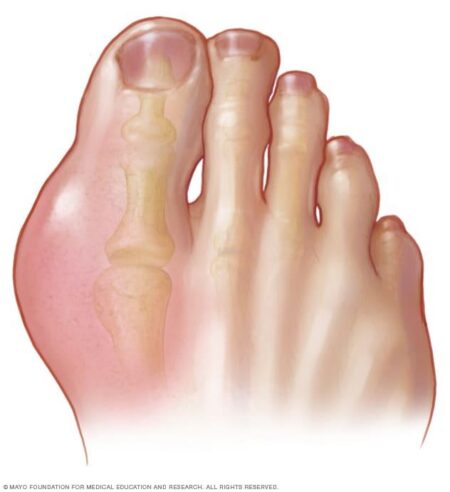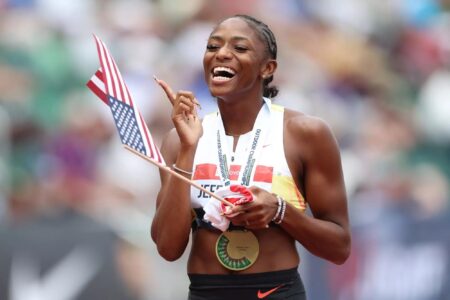In the fast-paced world of soccer,were every millisecond can make the difference between victory and defeat,understanding the underlying factors that influence sprinting performance in young players has become crucial. A recent study published in Frontiers delves into the anthropometric and mechanical determinants that play a pivotal role in sprinting ability among aspiring young athletes. By analyzing key measurements such as height, weight, and leg length alongside biomechanical mechanics, researchers aim to shed light on how these variables impact a player’s speed on the field. As youth soccer programs continue to evolve and competitiveness intensifies, insights from this report could inform training regimens, help coaches identify talent, and ultimately contribute to the development of the next generation of soccer stars. This brief report promises to arm stakeholders—coaches, parents, and young athletes alike—with knowledge that may accelerate growth and performance in the beautiful game.
Understanding the Role of Body composition in Sprint Performance of Young Soccer players
The relationship between body composition and sprint performance in young soccer players is a complex interplay that continues to garner attention in sports science.Research indicates that various anthropometric factors, including muscle mass, fat percentage, and overall body composition, considerably contribute to an athlete’s speed on the field. Players with a higher proportion of lean muscle mass tend to exhibit enhanced sprint capabilities, as this allows for more effective force generation during rapid acceleration and direction changes. Furthermore, optimal body fat percentages can play a vital role, providing not only energy reserves but also influencing agility and endurance. This underscores the importance of tailored fitness and nutritional strategies aimed at promoting a desirable body composition for aspiring soccer athletes.
In addition to these biological factors, mechanical aspects of sprinting also warrant attention. Understanding the kinematics of sprinting, which includes stride frequency and stride length, can reveal how body composition affects performance. It has been observed that athletes with an optimal balance between these kinematic elements and body composition tend to achieve superior sprint times. As a notable example,a streamlined body profile can improve aerodynamics and reduce drag,leading to more efficient movements. The table below summarizes the key anthropometric characteristics that influence sprint performance in young soccer players:
| Characteristic | Impact on Sprint performance |
|---|---|
| Lean Muscle Mass | Increased force production |
| Body Fat Percentage | Influences speed and agility |
| Height | Affects stride length |
| Leg Length | Critical for stride frequency |
Key Mechanical Factors Influencing Acceleration and Speed on the Field
In the quest for speed and acceleration on the soccer field, young players must consider several mechanical factors that significantly impact their performance. Key elements include the player’s stride length and frequency. A longer stride can facilitate more distance covered in each step, while a higher frequency allows for quicker transitions between strides. The interplay between these factors determines the efficiency of a player’s sprinting technique, ultimately resulting in faster accelerations. Additionally, the role of leg power and muscle engagement cannot be overlooked.Stronger leg muscles generate superior propulsion, leading to improved initial acceleration and sustained speed over short distances.
Another crucial element contributing to sprint performance is body mechanics. The alignment and coordination of movements, including aspects like hip extension and arm swing, can enhance a player’s overall speed. Considerations such as angular momentum and ground reaction forces provide insight into how players interact with the pitch during sprints. The following table summarizes the essential mechanical factors influencing sprint dynamics:
| Mechanical Factors | Description |
|---|---|
| Stride Length | Distance covered in each step. |
| Stride Frequency | Number of steps taken per second. |
| Body Mechanics | Posture and movement coordination. |
| Leg Power | Strength of leg muscles to generate force. |
| Ground Reaction Forces | Forces exerted by the ground during running. |
practical Recommendations for Optimizing Training Based on Anthropometric Insights
Understanding the anthropometric profiles of young soccer players can significantly enhance training outcomes,particularly in sprint performance. Coaches are encouraged to focus on individualized training regimens that account for the diverse physical characteristics of players. Here are some practical strategies to optimize training:
- Tailored Sprint Drills: Design sprint drills that are customized based on each player’s body composition and limb length to maximize explosiveness and speed.
- Strength Training Focus: Integrate strength training exercises such as squats and lunges, ensuring they are proportionate to the player’s body size to enhance muscle engagement during sprints.
- Technique improvement: Emphasize proper running mechanics through feedback sessions that focus on posture, foot strike, and acceleration techniques, particularly for players with longer limbs.
Furthermore, conducting periodic assessments of body metrics can help inform adjustments in training protocols. Here’s a concise breakdown of essential anthropometric measurements relevant to sprint performance:
| Measurement | Impact on Sprinting |
|---|---|
| Height | Longer stride length can enhance speed. |
| Weight | Optimal weight-to-height ratio can improve acceleration. |
| leg Length | Affects stride frequency and ground coverage. |
| Body Composition | Lower body fat percentage generally aids faster sprinting. |
The Way Forward
the study published in Frontiers highlights the critical interplay between anthropometric and mechanical factors in shaping the sprinting performance of young soccer players. As coaches and trainers seek to refine their strategies, understanding these elements can lead to more effective training regimens tailored to the unique physical attributes of each athlete. By focusing on enhancing sprint capabilities through targeted interventions, teams can unlock the potential of their players, ultimately paving the way for stronger performances on the field.As soccer continues to evolve, incorporating these insights will be vital for fostering the next generation of elite athletes. Stay tuned for further developments in sports science that could revolutionize training practices and improve player efficiency in this dynamic sport.





